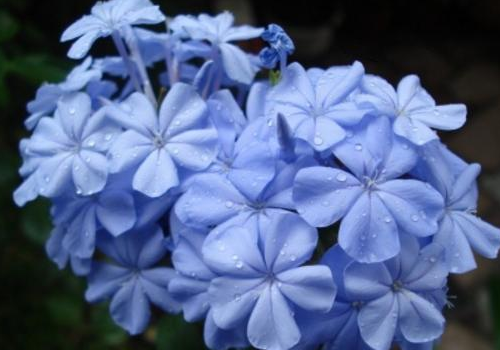How to plant and water Dutch chrysanthemum
Dutch chrysanthemum, when planting, there is some attention to watering. How to grow Dutch chrysanthemum? How do you water it?
How to grow Dutch chrysanthemum:
It can be planted by means of ramet, cutting, sowing and so on. Ramet can be carried out in spring and autumn, normally every three years, cutting can be carried out in spring and summer, select tender branches cut, inserted into the soil, about 18 to 20 days to grow new roots; sowing can be carried out in April every year, and sprouting can be seen about 12 to 14 days after sowing.

How to water the Dutch chrysanthemum:
1. Its demand for water
What this plant likes is a moist environment. However, it still has a certain tolerance to drought. However, it is certainly impossible not to water it for a long time. Also, do not be so wet that water accumulates. The reason is very simple, it is easy to rot if you accumulate too much water.
2. Principles to be followed
Generally speaking, the principle is "dry and wet". Generally speaking, it means to wait until the basin is dry enough before watering it. If it is not dry, it can not be watered for a while. In addition, it should be thoroughly watered even when it is watered. This is not only to prevent excessive watering, leading to rotten roots, but also to avoid damp causing some diseases and insect pests and so on.
3. Watering in a specific period
(1) in the peak period of its growth, it is specifically spring and summer. At this stage, more water can be poured, because the water demand will be correspondingly large.
(2) in autumn, we have to pour more water because it is relatively dry. Not only in autumn, but also in other relatively dry times, you can also pour more water.
(3) before entering winter, we need to pour frozen water on it. This is done to ensure that it can survive the winter safely. In other periods of winter, the growth of plants tends to slow down, and water demand decreases. Well, you don't have to water it.
4. Points for attention
Summer may be in the rainy season, and the rain may be very urgent. At this time, if you are caught in the rain, you can pour less water. However, when it is raining very hard, it is not suitable to keep it outside. Remove it in time to avoid excessive accumulation of water.
All right, that's all for the introduction of Dutch chrysanthemum planting, boys and girls.
How to plant Dutch chrysanthemum
Dutch chrysanthemum, also known as New York asters, has smooth leaves and umbels at the top of its branches, with blue-purple flowers. Dutch chrysanthemum can be potted indoors, and it can also be used as a flower basket and flower arrangement. How to raise such beautiful Compositae flowers? Let's learn how to grow Dutch chrysanthemum.
Pictures of Dutch chrysanthemum
First, how to grow Dutch chrysanthemum
Dutch chrysanthemum likes sunny and ventilated environment, strong adaptability, wet and drought tolerance, low requirements for soil, fertile and loose sandy soil is the most suitable for the growth of Dutch chrysanthemum. Dutch chrysanthemum should be fully fertilized before planting, and fertilizer should be applied every half a month during the growing period to promote the vigorous growth of Dutch chrysanthemum.
When it is found that diseases and insect pests are found in the cultivation of Dutch chrysanthemum, pesticides should be sprayed in time. Dutch chrysanthemum is generally easy to be infected with powdery mildew and brown spot, so it should not be too dense when planting, and pay attention to humidity and ventilation. Once Dutch chrysanthemum is found to be infected, it should be sprayed in time, and it can be sprayed with 65% Topurazine wettable powder 600 times. When the Dutch chrysanthemum is damaged by aphids. Spray with 1000 times of dichlorvos EC.
Pictures of Dutch chrysanthemum
2. Planting methods of Dutch chrysanthemum
1. Plots: Dutch chrysanthemum is a dry crop, so you need to choose plots with convenient transportation and close to water sources. Requires loose texture, fine broken soil, good air permeability, pH6.5~7 sandy soil or sandy loam.
two。 Variety: according to many years of planting in this area, generally choose Dutch imported seeds, varieties are Fogus, Tabor, Vintor and so on, which are easy to cultivate and manage.
3. Sowing preparation: early planning and establishment of internal and external ditch system. A horizontal ditch with a width of 35cm and a depth of 35cm was opened at the border length of 30m, and a vertical trench with a width of 30~40cm and a depth of 40cm was established every 10 rows, the width of the ditch was 40cm and the depth of the ditch was 50cm, and the depth of the ditch outside the field was 80~100cm to ensure smooth drainage. Ploughing the land as early as possible, applying basic fertilizer, applying potassium sulfate compound fertilizer 10kg / mu, making the border in the north-south direction, 90cm wide, sowing 3 rows, ditch width 30cm, deep 30cm more than to enhance soil permeability.
4. Timely sowing: bolting, vegetative growth into reproductive growth, losing the role of fleshy root; sowing too late, the rhizome overwintering damage, affecting the quality of fleshy root. On the border, strip sowing is carried out according to the row spacing 30cm, generally using 50 ~ 60g seeds per mu (25000 ~ 30000 seeds).
5. Sowing method: sowing in a large area with sowing machine, sowing depth 1cm, and checking the cover thickness after sowing. In case of rainy days, manual sowing can be added. After sowing, first water, and then cover the grass, after the cover, pay attention to check seedling emergence and humidity, timely remove the mulch to prevent tall seedlings. In this way, the effects of high temperature exposure and rainstorm erosion on Dutch chrysanthemum can be prevented, and the evenness of seedlings can be ensured.
6. Timely interseedling: the first interseedling was carried out at 5-6 leaf stage with 6~7cm, and the seedlings were gently cut off with a knife, and the second interseedling was carried out at 9-10 leaf stage with plant spacing 13~15cm, which could be gently removed from the root. At the same time, it is combined with clearing ditches, loosening soil and weeding.
7. Reasonable topdressing: in the middle stage of chicory growth, the leaf color faded obviously. For the fields with poor growth, it is necessary to apply a small amount of potassium sulfate compound fertilizer, 5kg per mu, or amino acid high-efficiency liquid fertilizer for extra-root topdressing, and do not overuse chemical fertilizer.
8. Note: choose sunny, ventilated environment and fertile, well-drained sandy loam. During the growing period, fertilization is applied once a month, and plastic surgery and coring is carried out in summer to promote more branches and flowers, but the plant should not be too dense, otherwise powdery mildew is easy to occur.
Pictures of Dutch chrysanthemum
Dutch chrysanthemum planting method has been introduced, I do not know how you learn, large area planting may be more difficult to manage, potted planting is still relatively simple, I hope the above content is helpful to everyone.
How to plant Dutch chrysanthemum seeds
How to plant Dutch chrysanthemum 1. Planting time
The planting time of Dutch chrysanthemum is generally suitable from July 25 to August 15 every year, if sowing too early, Dutch chrysanthemum will bolt ahead of time, vegetative growth will be transformed into reproductive growth, losing the role of fleshy root; if sowing too late, the rhizome is damaged in winter, it will affect the quality of fleshy root of Dutch chrysanthemum.
2. Potted soil and seeds
The soil sown with Dutch chrysanthemum generally requires loose texture, fine broken soil, good air permeability, pH6.5~7 sandy soil or sandy loam, and healthy and full seeds are generally selected.
3. Planting method
Dutch chrysanthemum can generally use the method of on-demand sowing the seeds of Dutch chrysanthemum to the pot soil, generally sowing depth 1cm, check the cover thickness after sowing, cover a thin layer of soil after sowing, and properly water and moisturize, then put the flowerpot in a well-ventilated place.
Seeds usually germinate in about 7 to 10 days.
4. Seedling treatment
The first seedling was carried out at the 5-6 leaf stage, the distance between the plants was 6~7cm, and the seedlings were gently cut off with a knife.
The second seedling was carried out at the stage of 9-10 leaves, and the plant distance was 13~15cm, and the seedlings could be gently pulled out from the roots.
- Prev

The difference between the reproduction of purple jasmine and night incense
Purple jasmine, many people regard it as nocturnal incense, it is not clear. How does purple jasmine reproduce? The difference between evening primrose and night incense? How to reproduce purple jasmine: the sowing reproduction of purple jasmine, the sowing reproduction of purple jasmine is very simple, and purple jasmine has a strong self-sowing ability, so
- Next

How to raise Lanhuadan and how to pollinate
Home-grown blue flower Dan should be how to raise it to make it luxuriant. How to raise Lanhuadan? How to pollinate: how to raise Lanhuadan: 1. Lanhuadan is propagated by sowing, cutting or ramet propagation. The cutting method is mostly carried out at the beginning of summer, and the temperature is 20-25 degrees.
Related
- Fuxing push coffee new agricultural production and marketing class: lack of small-scale processing plants
- Jujube rice field leisure farm deep ploughing Yilan for five years to create a space for organic food and play
- Nongyu Farm-A trial of organic papaya for brave women with advanced technology
- Four points for attention in the prevention and control of diseases and insect pests of edible fungi
- How to add nutrient solution to Edible Fungi
- Is there any good way to control edible fungus mites?
- Open Inoculation Technology of Edible Fungi
- Is there any clever way to use fertilizer for edible fungus in winter?
- What agents are used to kill the pathogens of edible fungi in the mushroom shed?
- Rapid drying of Edible Fungi

